In the dynamic world of transportation and logistics, the specifications of your equipment can significantly impact efficiency, compliance, and overall operational success. Among the essential parameters, the height of a flatbed trailer stands out as a critical factor influencing load compatibility, road safety, and regulatory adherence. At CarMax Trailer, we delve deep into this subject to provide a detailed understanding that aids manufacturers, fleet operators, and logistics professionals in making informed decisions.
Table of Contents
- Introduction to Flatbed Trailers
- Standard Height Specifications
- Factors Influencing Trailer Height
- Customizing Flatbed Trailer Height
- Impact of Trailer Height on Performance
- Comparison of Flatbed Trailer Heights
- Regulatory Standards and Compliance
- Choosing the Right Trailer Height for Your Needs
- Benefits of Optimizing Trailer Height
- CarMax Trailer’s Expertise in Trailer Height Customization
- Conclusion
- Frequently Asked Questions
Introduction to Flatbed Trailers
Flatbed trailers are indispensable in the transportation industry, renowned for their versatility in carrying a wide array of cargo. Unlike enclosed trailers, flatbeds offer an open platform, facilitating the transport of oversized, irregularly shaped, or bulky items that require easy loading and unloading. Understanding the height of a flatbed trailer is paramount, as it directly affects load compatibility, maneuverability, and compliance with transportation laws.
At CarMax Trailer, our commitment to excellence drives us to provide tailored trailer solutions that meet diverse operational needs. This article explores the multifaceted aspects of flatbed trailer heights, offering insights that empower stakeholders to optimize their logistics strategies.
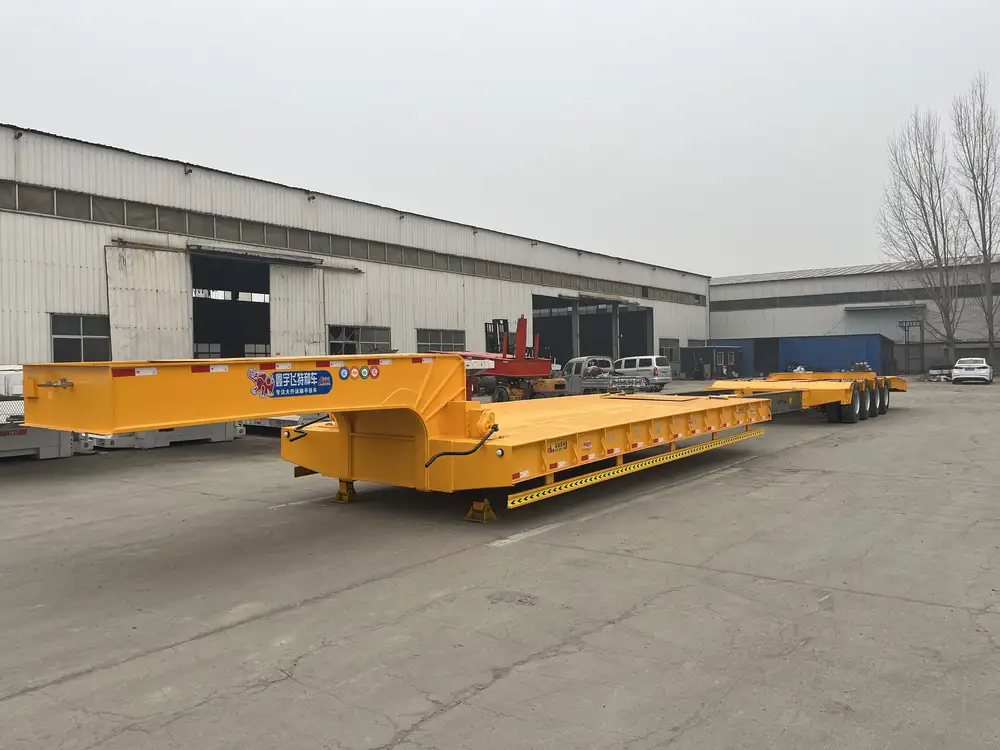
Standard Height Specifications
The standard height of a flatbed trailer typically ranges between 48 to 53 inches (approximately 4 to 4.4 feet) from the ground to the top of the deck. This measurement is crucial as it determines the types of loads that can be accommodated without exceeding height restrictions set by transportation authorities.
Key Standard Heights:
| Trailer Type | Standard Height (inches) |
|---|---|
| Commercial Flatbed | 48-53 |
| High-Cube Flatbed | 60-65 |
| Low-Profile Flatbed | 40-44 |
These standard heights are designed to balance load capacity, stability, and compliance with road regulations. However, variations exist based on specific use cases and regional requirements.
Factors Influencing Trailer Height
Several factors influence the determination of a flatbed trailer’s height. Understanding these variables is essential for optimizing trailer performance and ensuring seamless operations.

Load Requirements
The nature of the cargo plays a pivotal role in deciding trailer height. Heavier or bulkier loads may necessitate higher decks to provide adequate clearance and support.
- Oversized Cargo: Requires higher decks to accommodate large dimensions.
- Standard Loads: Fit within the typical height range, ensuring stability during transit.
Regulatory Compliance
Transportation laws impose height restrictions to ensure road safety and infrastructure compatibility. Exceeding these limits can result in penalties and logistical challenges.
- State Regulations: Vary across regions, affecting maximum permissible heights.
- Federal Guidelines: Provide overarching standards that must be adhered to nationwide.
Vehicle Compatibility
The trailer height must harmonize with the towing vehicle’s specifications to ensure optimal performance and safety.
- Truck Cabinet Clearance: Ensures that the trailer does not interfere with the truck’s components.
- Hitch Mechanism Alignment: Facilitates secure and stable connections between the trailer and the tractor unit.

Customizing Flatbed Trailer Height
Customization is often necessary to meet specific operational demands. CarMax Trailer offers a range of customization options to tailor trailer heights according to client needs.
Adjustable Deck Heights
Some flatbed trailers feature adjustable deck heights, allowing for flexibility in accommodating various loads and adapting to different loading conditions.
- Hydraulic Adjustments: Enable precise control over deck elevation.
- Mechanical Systems: Provide durable solutions for frequent height modifications.
Specialized Designs
For unique cargo requirements, specialized trailer designs offer enhanced functionality and performance.
- Extendable Decks: Facilitate transport of exceptionally long loads.
- Reinforced Structures: Support heavy or dense cargo without compromising trailer integrity.
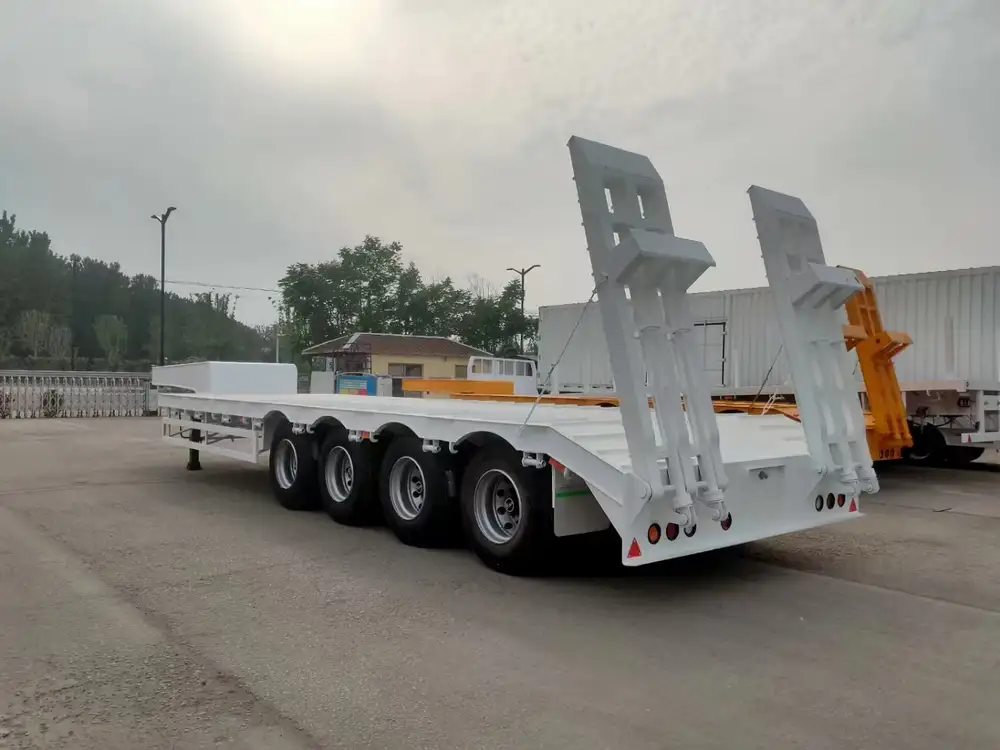
Impact of Trailer Height on Performance
The height of a flatbed trailer significantly influences its performance, affecting aspects such as stability, handling, and fuel efficiency.
Stability and Handling
Proper trailer height ensures balanced weight distribution, enhancing stability during transit.
- Lower Heights: Contribute to a lower center of gravity, improving handling.
- Higher Heights: May require additional stabilization to prevent tipping or swaying.
Fuel Efficiency
Trailer height impacts aerodynamics, which in turn affects fuel consumption.
- Optimized Heights: Reduce air resistance, promoting better fuel economy.
- Excessive Heights: Increase drag, leading to higher fuel costs and environmental impact.

Comparison of Flatbed Trailer Heights
Understanding the differences between various trailer heights can aid in selecting the most suitable option for specific transportation needs.
Standard vs. High-Cube Trailers
| Feature | Standard Flatbed | High-Cube Flatbed |
|---|---|---|
| Height (inches) | 48-53 | 60-65 |
| Cargo Capacity | Suitable for most loads | Ideal for oversized cargo |
| Maneuverability | High | Moderate |
| Regulatory Compliance | Generally compliant | May require special permits |
Low-Profile Trailers
Low-profile flatbed trailers offer a height range below the standard, typically between 40-44 inches, providing advantages in specific scenarios.
- Urban Deliveries: Navigate tight city infrastructures with ease.
- Fuel Efficiency: Enhance aerodynamics for better mileage.
- Load Limitations: Best suited for lighter or less bulky cargo.

Regulatory Standards and Compliance
Compliance with height regulations is non-negotiable in the transportation sector. Non-compliance can lead to legal repercussions, fines, and operational disruptions.
National Regulations
In the United States, the Federal Highway Administration (FHWA) sets the maximum allowable height for commercial vehicles at 13.5 feet. However, specific states may have variations:
| State | Maximum Height (feet) |
|---|---|
| California | 14.5 |
| Texas | 13.5 |
| New York | 13.5 |
| Florida | 13.5 |
International Standards
Globally, height regulations differ, necessitating awareness for international logistics operations.
- European Union: Generally allows up to 4 meters (13.12 feet).
- Australia: Maximum height is around 4.3 meters (14.11 feet).
Understanding and adhering to these standards is crucial for cross-border transportation.

Choosing the Right Trailer Height for Your Needs
Selecting the appropriate trailer height involves a strategic assessment of various factors to ensure operational efficiency and compliance.
Assessing Cargo Dimensions
Accurate knowledge of cargo height, width, and length is fundamental in determining the necessary trailer height.
- Oversized Cargo: Requires higher decks to prevent overhang and ensure safe transport.
- Standard Cargo: Fits within standard trailer heights, optimizing load capacity and stability.
Evaluating Route Constraints
Route-specific limitations, such as bridge clearances and tunnel heights, must be considered to avoid transportation hurdles.
- Urban Routes: May have stricter height regulations compared to rural highways.
- Long Haul Routes: Often more lenient, allowing for higher trailer heights without significant restrictions.
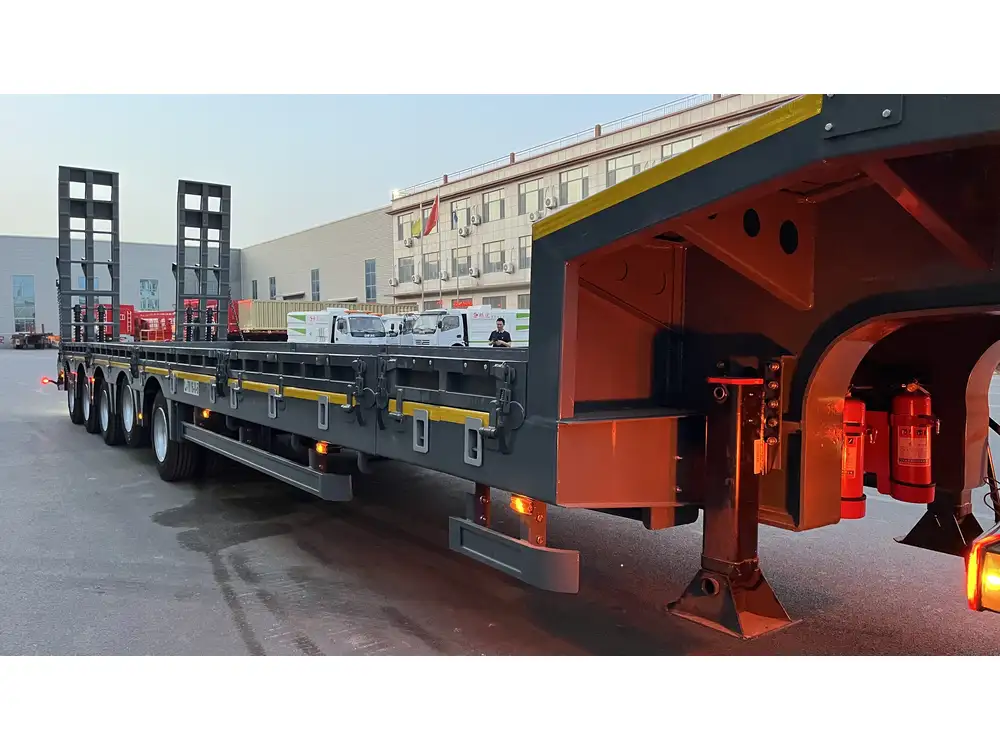
Benefits of Optimizing Trailer Height
Optimizing the height of your flatbed trailer offers multiple advantages that enhance overall operational performance.
Enhanced Safety
Proper trailer height minimizes the risk of accidents caused by overhang, instability, or clearance issues.
- Reduced Overhang: Prevents cargo from obstructing traffic or causing obstructions.
- Improved Stability: Ensures balanced weight distribution, enhancing control during transit.
Operational Efficiency
An optimized trailer height streamlines loading processes, reduces fuel consumption, and lowers maintenance costs.
- Faster Loading/Unloading: Simplifies handling of cargo, saving time and labor costs.
- Fuel Savings: Enhanced aerodynamics contribute to lower fuel usage over long distances.
- Extended Trailer Lifespan: Proper height reduces wear and tear, minimizing repair and replacement expenses.
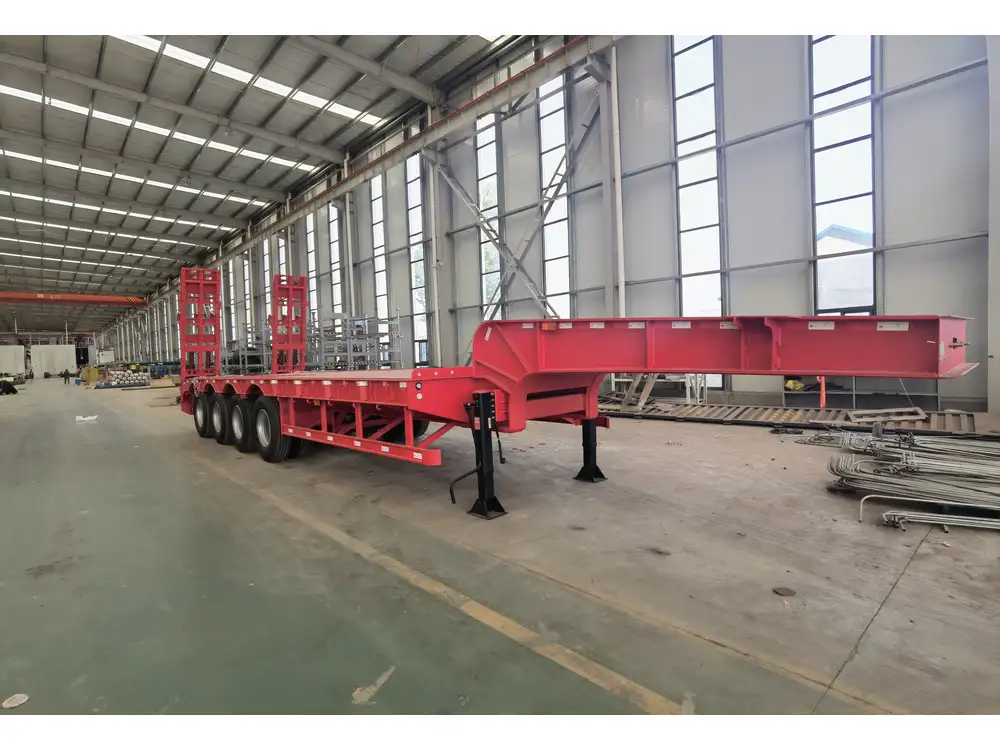
CarMax Trailer’s Expertise in Trailer Height Customization
At CarMax Trailer, we pride ourselves on delivering customized solutions that meet the unique needs of our clients. Our expertise encompasses:
- Precision Engineering: Ensuring optimal trailer heights for diverse cargo requirements.
- Regulatory Knowledge: Staying abreast of national and international height regulations to guarantee compliance.
- Innovative Designs: Incorporating adjustable and specialized features to enhance trailer functionality.
- Quality Assurance: Rigorous testing and quality checks to maintain the highest standards of safety and performance.
Our dedicated team collaborates closely with clients to understand their specific needs, providing tailored trailer height solutions that drive operational success.
Conclusion
The height of a flatbed trailer is a pivotal aspect that influences various facets of transportation and logistics. From ensuring regulatory compliance and operational efficiency to enhancing safety and performance, understanding and optimizing trailer height is essential for any transportation enterprise. At CarMax Trailer, our commitment to excellence and customization empowers our clients to navigate the complexities of trailer specifications with confidence and precision.
By leveraging our comprehensive insights and expertise, you can make informed decisions that enhance your logistical operations, reduce costs, and maintain a competitive edge in the transportation industry.
Frequently Asked Questions
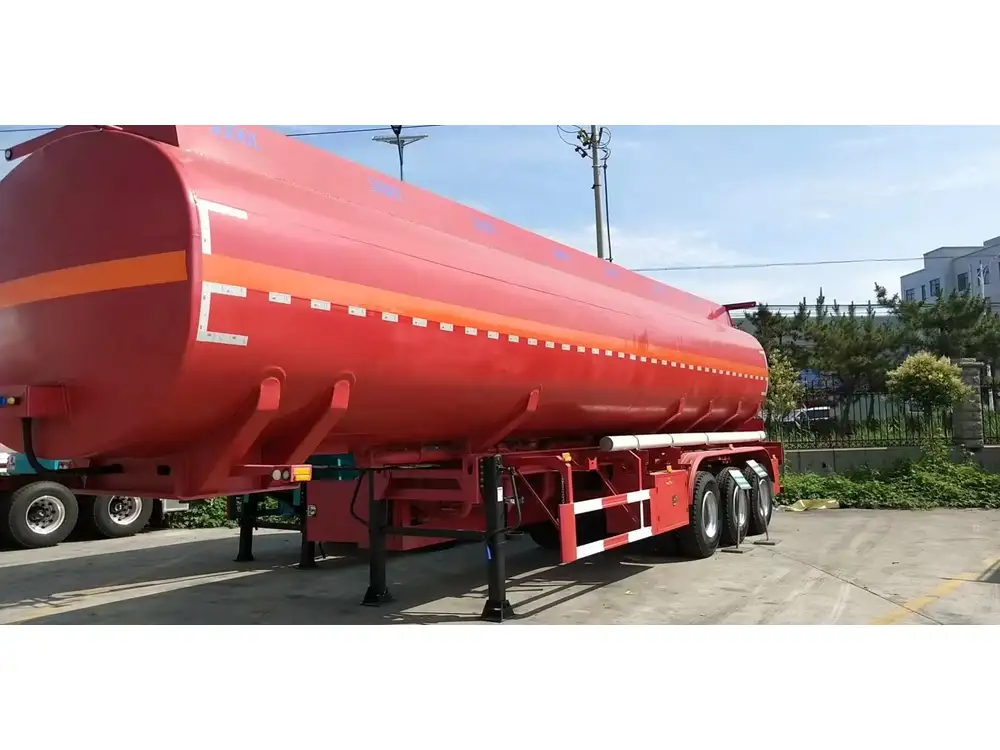
1. What is the standard height of a flatbed trailer?
The standard height of a flatbed trailer typically ranges between 48 to 53 inches from the ground to the top of the deck. This range accommodates most standard cargo while adhering to common transportation regulations.
2. Can flatbed trailer heights be adjusted?
Yes, many flatbed trailers come with adjustable deck heights. These adjustments can be made using hydraulic or mechanical systems, allowing for flexibility in accommodating different load sizes and enhancing operational versatility.
3. What factors should I consider when selecting a flatbed trailer height?
When selecting a trailer height, consider the dimensions and weight of your cargo, regulatory height restrictions in your operating regions, compatibility with your towing vehicle, and specific route constraints. Assessing these factors ensures optimal performance and compliance.

4. How does trailer height affect fuel efficiency?
Trailer height impacts aerodynamics; lower heights generally reduce air resistance, leading to improved fuel efficiency. Conversely, higher trailers may increase drag, resulting in higher fuel consumption. Optimizing trailer height can thus contribute to significant fuel savings over time.
5. Are there different trailer heights for international transportation?
Yes, different countries have varying height regulations for commercial vehicles. For instance, the European Union typically allows up to 4 meters (13.12 feet), while Australia permits around 4.3 meters (14.11 feet). It’s essential to be aware of and comply with the specific height regulations of each region you operate in.



